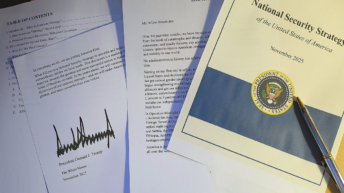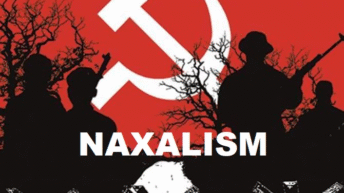The Supreme Court of India’s assertion of the authority to direct the President of India to settle all matters pending before her office within a certain time frame, has led to a head-on confrontation with the Government of India. Loyalists on both sides of the divide have joined the fray on social media, but the issues involved are too serious to be settled by repartee. The only resolution seems to be impeachment proceedings against a former judge of the Supreme Court, and a Constitutional Amendment restoring the power of appointing judges to the Government of the day.
The controversy began with the Tamil Nadu government’s grievance that the Governor was sitting on Bills passed by the Assembly. In The State of Tamil Nadu vs The Governor of Tamil Nadu, the Supreme Court held that inaction can be remedied with Article 142, which enables the Court to do “complete justice”. The Court declared that Bills, for which consent had long been withheld, are deemed to be assented to. Acting on the judgment, the Government of Tamil Nadu quickly notified the Acts.
Senior advocate Indira Jaising observed that as the term of an elected government is only five years, the withholding of consent could cause bills to lapse with the dissolution of the assembly. (SC action on TN governor is not overreach. Here’s why, Indira Jaising, Indian Express, April 18, 2025) She noted that Article 142 is subject to the limitation that it can be used only where there is a statutory or constitutional silence. It can never be used against a statutory provision. Yet the Court’s declaration that the President of India could also be directed to assent to Bills within three months of their reaching her office, was outside the scope of the Tamil Nadu case and beyond the powers of the Supreme Court itself.
Incensed at the judiciary exceeding constitutional limits, Vice President Jagdish Dhankhar led the charge. Addressing Rajya Sabha interns on April 17, 2025, he recalled that on the night of March 14-15, 2025, a huge quantity of currency notes were detected in a fire at the New Delhi residence of a judge of the Supreme Court, and the matter inexplicably kept secret for seven days. Finally, a newspaper disclosed the incident on March 21, 2025.
Though one month has passed since, and a criminal investigation is in order, even a First Information Report (FIR) has not been filed. The Constitution of India, the Vice President noted, grants immunity from prosecution only to the President and Governors, yet this immunity has been extended to a judge of the Supreme Court.
Dhankhar lamented that if the money had been found in the home of an ordinary citizen, action would have followed at the speed of an “electronic rocket,” but “now it is not even a cattle cart.” He expressed surprise that a committee of three judges is investigating the matter, when investigation is domain of the executive and not the judiciary. The committee thus has no sanction in law.
This committee can at best make a recommendation, but to whom will it make this recommendation, Dhankhar mused. Under the Constitution, only Parliament can take action against judges. In 1993, Justice V. Ramaswami faced impeachment for gross misuse of office, but was saved by abstentions during the Lok Sabha vote. He retired on February 14, 1994. In 2009, Judge Soumitra Sen of the Calcutta High Court was charged with misappropriation of funds and the motion for his removal was passed in the Rajya Sabha. He resigned in September 2011, days before the Lok Sabha was to take up the matter.
The extant case seems to be a fit case for impeachment, yet as the Vice President queried, can India “have separate law made by a category and the law made by that category dehors constitution, dehors Parliament” (outside the scope of). He stressed that the concept of independence of the judiciary is not an “impregnable cover against enquiry.”
The Constituent Assembly, Dhankhar observed, framed the rule that judges will be appointed under Article 124 and there would be consultation (with the Chief Justice of India). This consultation is not concurrence. In fact, Dr. B.R. Ambedkar had asserted that, “I think, to allow the Chief Justice practically a veto upon the appointment of judges is really to transfer the authority to the Chief Justice which we are not prepared to vest in the President or the Government of the day. I therefore think that is also a dangerous proposition.”
Despite this, in the Second Judge’s Case (1993), the Court ruled that consultation would be read as concurrence (made binding on the Executive). He pointed out that the original Article 370 concerning the State of Jammu and Kashmir provided for both consultation and concurrence, Article 124 does not. Whereas Parliament cannot script a judgment of the Court, the situation today is that of “executive governance” by judicial orders, when it is the executive, the elected government that is accountable to Parliament and to the people.
Historically, judges speak through their judgments, and only through their judgments. But today we see the spectacle of judges venturing out on public platforms, on media platforms. The ideal situation is when the legislature operates from parliament, judges from their courtrooms, and executive works as envisioned by the Constitution.
Recalling the doctrine of Basic Structure in the context of a book by a former judge of the Supreme Court on the Jallianwala Bagh massacre, the Vice President said it would be pertinent of examine the doctrine bequeathed by the Keshvanand Bharti case. The former judge viewed the judgment by a Bench of thirteen judges (April 24, 1973) as “our saviour.” Yet despite this basic structure doctrine, a Prime Minister imposed Emergency on June 25, 1975, to save her chair. It lasted up to March 21, 1977, and during this period, there were no fundamental rights, so the “impregnability of basic structure was so demolished” by the apex court, reversing the judgments of nine high courts!
President supreme authority
Dhankhar said that the President of India takes an oath to preserve, protect and defend the constitution; Governors, her appointees, also take this oath. All others, including the Prime Minister, Vice President, ministers, MPs, judges, take an oath to abide by the constitution.
Yet today, we have a situation in which a directive is given to the President to decide matters in a time-bound manner: “Where are we heading?” This astonishing development took place without hearing the President’s side, an epitome of judicial entitlement. As Dhankhar said, judges are deciding “who will legislate, who will perform executive functions, who will act as super Parliament,” with no accountability, as the law of the land does not seem to apply to them.
The Supreme Court, Dhankhar asserted, has the right to interpret the Constitution under Article 145(3), under a five-judge Bench. At the time the Constitution was framed, the strength of the Supreme Court was eight judges, of which a Bench to interpret the Constitution had to have five judges. This was a clear majority of the Court. The apex court now has 30 judges; hence an amendment to deal with cases under Article 145(3) should be considered.
The Vice President expressed dissatisfaction that Article 142 “has become a nuclear missile against democratic forces.” He asserted that judges are appointed only by the President and Parliament is the sole authority to take action against them. He urged the merits of self-regulation as the most effective regulation.
It appears that a new National Judicial Appointments Commission (NJAC) is on the anvil, as questions legitimately arise about the manner in which judges are selected to the apex court. Bar Associations have questioned the selection of judges from certain families, and the growing laxity wherein lawyers practice in courts where a parent is a sitting judge. The first NJAC was declared unconstitutional by the Supreme Court in 2015, because it undermined judicial independence by allowing the Union Law Minister to have a say in judge selection (a settled practice all over the world).
The accidental discovery of a huge cache of cash in a judge’s home, and his transfer to a High Court to the chagrin of the Bar Association there, has agitated public opinion and elicited calls to end the collegium system and the opaque system wherein judges appoint fellow judges on undisclosed criteria. In recent years, the Supreme Court has taken a dim view of concerns flagged by the intelligence and other agencies, expressed displeasure at delays in certain appointments, and ensured that it has its way. This golden era is likely to end soon.
Judicial resistance to disclosing the assets owned by the judges, their spouses, dependent children has also invited considerable public opprobrium. For several decades, all candidates standing for election to Parliament or a State Assembly, declare their assets and those of their spouse, minor children/ dependants. Government employees make annual declarations to their institutional heads. It is only the judiciary that has exempted itself from this practice, and this privilege could end soon.
Vice President Dhankhar, excoriated in the media and social media for taking a stand on the dignity of the President’s office and the impunity of well networked judges, is likely to carry the day as he has considerable experience as a Parliamentarian and lawyer. The Collegium system has fallen into disrepute over the years and the recent meeting of Prime Minister Narendra Modi with Home Minister Amit Shah, Defence Minister Rajnath Singh, and BJP National General Secretary (Organisation), BL Santosh, suggests that change is in the air.






Add comment